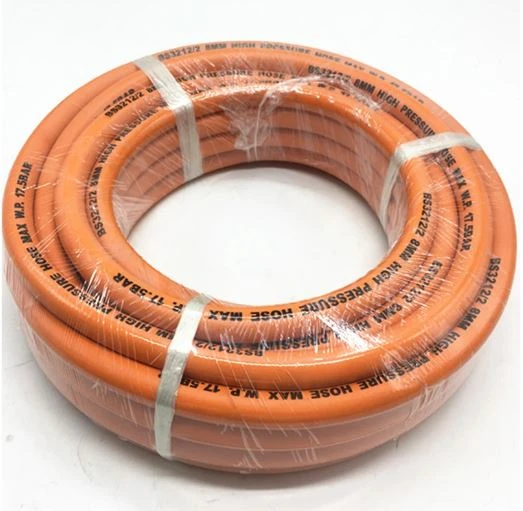Uses and Safety Guidelines for Oxy-Acetylene Welding Hoses and Equipment
Understanding Oxy-Acetylene Hose A Comprehensive Guide
Oxy-acetylene hoses are a critical component in the field of welding and metal cutting, serving as the lifeline for the gas mixtures that fuel these processes. This versatile hose setup is specifically designed to transport oxygen and acetylene safely from their respective tanks to the torch where the mixture is ignited. The functionality and safety of oxy-acetylene hoses are paramount, considering the highly flammable nature of acetylene and the vital role of oxygen in combustion.
Construction and Materials
Oxy-acetylene hoses are typically made from a pair of distinct materials, each tailored for the specific gas they carry. The hose designed for oxygen is usually constructed from a durable synthetic rubber such as nitrile or neoprene, which can withstand high pressures and prevents any permeation of gases. In contrast, the acetylene hose is typically crafted from a specially formulated synthetic rubber that is more flexible. This flexibility is crucial for maneuverability during welding projects, allowing the operator to move freely without the hose becoming kinked or tangled.
Color Coding for Safety
To promote safety and prevent hazards, oxy-acetylene hoses are color-coded. The oxygen hose is usually colored green, while the acetylene hose is red. This color differentiation is crucial for quick identification, especially in high-pressure situations or when working in environments where multiple gas types may be present. Color coding helps to minimize the risk of connecting the wrong gas to the torch, which could lead to explosive situations.
Pressure Ratings and Specifications
oxy acetylene hose

Oxy-acetylene hoses are built to withstand high pressures, which is essential for their operation. Most hoses are designed to function safely at pressures of around 200-300 psi, with a burst pressure significantly higher to ensure safety during use. Additionally, hoses are typically available in various diameters, allowing welders and tradespeople to choose the most appropriate size for their specific applications. It is vital to regularly inspect hoses for any signs of wear or damage, such as cracks or abrasions, to maintain operational safety.
Maintenance and Safety Practices
Proper maintenance of oxy-acetylene hoses is crucial to ensuring both longevity and safety. Users should routinely check for signs of damage and replace hoses that show any signs of wear. Furthermore, hoses should be stored coiled and away from heat sources to prevent degradation. During use, keeping hoses away from sharp edges and hot surfaces can significantly extend their lifespan.
In terms of safety practices, users should always ensure that their working environment is well-ventilated. In case of fire or fumes, having appropriate firefighting equipment on hand and knowing the emergency procedures can significantly enhance safety. Always check connections for leaks, and consider using a gas leak detector for added peace of mind.
Conclusion
In conclusion, oxy-acetylene hoses are more than just conduits for gas; they are essential tools in the welding and metalworking industry. Their design, materials, and maintenance directly impact not only the effectiveness of welding tasks but also the safety of the operator. By understanding the characteristics and proper handling practices for oxy-acetylene hoses, users can enhance both their efficiency and safety in the workplace. Whether you are a seasoned welder or a novice enthusiast, taking the time to appreciate the intricacies of this vital equipment will ensure successful and safe metalworking endeavors.
-
Top Quality Oxy Acetylene Hoses for Sale Fit for Welding DemandsNewsJul.28,2025
-
The Future of Pneumatic Air Tubes in IndustryNewsJul.28,2025
-
Superior and Reliable LPG Hose Pipe Solutions for Every NeedNewsJul.28,2025
-
Exceptionally Durable and Versatile Premium Braided PVC TubingNewsJul.28,2025
-
Best Adapters for Connecting Garden Hose to PVC Pipe ConnectionsNewsJul.28,2025
-
The Essential Role of LPG Hoses in Safe and Efficient Gas DistributionNewsJul.16,2025














